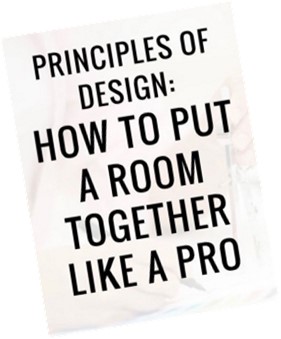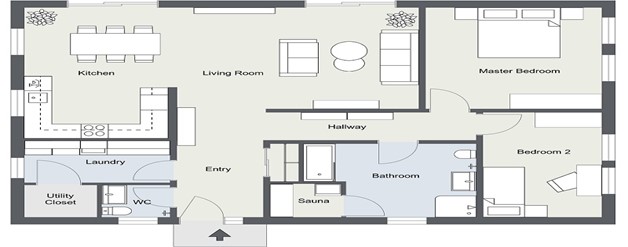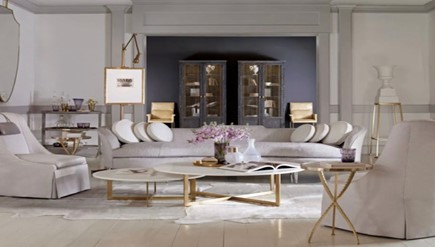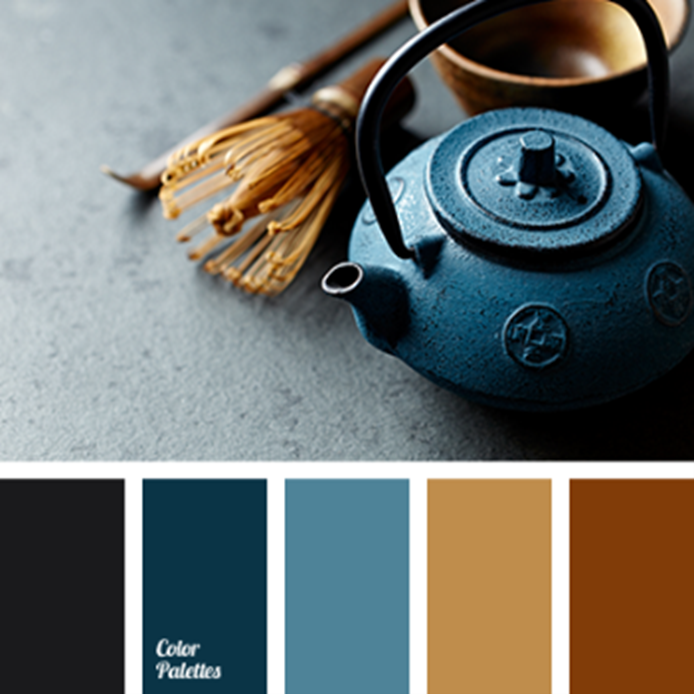
.....With Color Schemes
Before we get into color schemes, there are still many things for you to consider. I guess the most important will be your budget. About how much are you willing to spend on this project?
What’s the purpose of the space you’ll be decorating? Is it for informal living? Formal living? Personal space? These are important factors to consider before you begin shopping for the project.
Once you’ve decided upon your budget and purpose, you should start window shopping on-line or in the stores, but not buying anything until you are definitely sure your selections mesh together…and are proportionate to your space. I’d recommend that you cut out pics of the furniture, lighting, and accessories you’ve chosen, along with the prices of each of your selections. The next step is to attach them onto your mood board(s). This way…not only will you have an idea of the overall project cost, but you’ll also see how the furniture, artwork, lighting, area rugs, etc. work together. Observe what kind of furniture styles, and color schemes, etc. that you’re drawn to.
Physical Space Matters

Another important consideration is the amount of space you have. Normally, an interior decorator would carefully measure your space, and create floor plans to ensure that all the furniture pieces fit properly. Based upon the floor plan, the decorator will know how the furniture should be placed within the space, as well. We will discuss some simple techniques for measuring and for the placement of the furniture in our next blog.
These are all necessary considerations before you proceed with your color selections.
Color Choices are Personal

Why is the selection of colors for your place so personal? The answer is rather simple—like with food…we all have different taste buds. There’s no right or wrong way to select a color scheme for your place, but it should connect to the elements (furniture, accessories, artwork, etc.) you’ve chosen for the room. In fact, the most important thing is to find a color scheme that works for you personally. Look carefully at your selections on the mood board for possible color scheme options.
How Colors Can Affect Your Mood

The selection of colors for your place is yet another form of organization, because color combinations can influence how you personally experience a room. Colors can have a powerful effect on the way you feel when entering a room. Certain shades can trigger feelings of warmth, comfort, or calming, etc. Fundamentally, we all react to visual stimulus in different ways. Color can transform a plain room into a striking space, but selecting the ‘just right’ color palette is often a challenge. There’s so much research done on the selection of colors and color schemes…but we’ll try to keep this less scientific and more practical.
Finding Inspiration for Your Color Selection

When choosing wall colors, it’s important to keep the goal of the space in mind. Try resisting the temptation to choose paint colors before you select furniture and accessories, etc. Believe it or not, my method is as simple as it gets. First, I start out by finding an area rug that I love, or some wall art…or a sofa…or a side chair, etc., which have appealing colors in the pattern. Then I base my color choices on those elements. Many decorators choose a color scheme from the largest pattern in the given object. Keep in mind that warm tones, like reds, oranges and yellow will energize your space. And cool tones like blues, greens, and purple should create a rather quiet, relaxing atmosphere. Oftentimes, I’ll take a darker color from one of the patterns and lighten that color by adding white paint. The color then blends very well with your other elements.
Choosing Color Schemes

Should you select only one color for everything in your room? Again, using only one color is a matter of taste, especially if you are looking for more of a monochromatic color theme! This type of color scheme is where a single base color forms the foundation of the room’s color design. Various shades and tones of that one color can accent the space, while there are no other colors present. However, should you like some color, I’d recommend using a rather simple rule– the 60/30/10- ish rule. This is a basic decorating rule that helps you to create a color palette, which is meant to give some balance to the colors used in your space. You can successfully incorporate many colors into your palette, but unless you’re a professional, I’d try to stick with only three colors in any room. The 60 percent would be the majority of your wall color, which anchors the space and serves as a background for what comes next. Essentially, 60% should be the dominant color. The 30 percent represents the secondary color or texture. You’ll only be using half as much of this color as your main color. This could possibly be the colors in your window treatments, a piece of furniture, accent chairs or even an accent wall. The 10 percent is used mostly for accent colors in accessories— possibly a bed quilt or coverlet, or throw pillows in the living room or some decorative accessories, etc. If possible, try selecting one dark color, one light color, and one bright color in each room.
Connecting Colors

You don’t need the same color scheme in every room, but you should, at least, try to connect the colors, especially if your space has an open floor plan. Varying lighter or darker shades of the same wall paint color is always an option when attempting to connect colors. Most paint chips now have light to dark progressions of the same color, all having common hues. Color connections can also be made by painting the walls varying shades of white… and then injecting connecting colors in your accessories, furniture, area rugs and window treatments. White walls are often used in open spaces to achieve this color continuity. Keep in mind that you don’t have to paint two rooms the same color. However, keeping the rooms the same color should make both rooms appear larger.
Keep Lighting in Mind

When selecting colors, we need to be mindful of the natural light in each of the rooms you’ll be decorating. Since color is a reflection of light, the amount of light will affect your color scheme. Natural daylight is probably the best light source, but changes throughout the day as the sun travels. Warmer palettes can be better to make shadows softer. The safest method is choosing color schemes under the exact lighting you plan to have in the room. Keep in mind that wall colors will definitely take on the reflections from furniture, rugs, etc. Take your color swatches and monitor how they look in the room throughout the day under natural light, or with incandescent lamps, which make colors look warmer. Fluorescent lamps, on the other hand, make colors look bluish or cooler looking.
Color Schemes for Masculine Interior Designs

If you ask a guy to identify a feminine color, he’ll most likely respond with the color pink. Similarly, if a woman is asked the same question about guys, she’d probably respond dark blue. Typical responses, as such, are related to how we were raised. I thought this gender thing had been thrown out the window long ago, but the use of pink and blue are still currently reinforced at most gender reveal celebrations, girls and boy’s birthday parties, with boy’s and girl’s clothing, and kid’s bedrooms, etc.
Again, there’s no right or wrong answer here, especially when it comes to color choice. Should gender really be associated with specific color preferences? It’s all a matter of taste, not gender, when selecting color schemes.
However, we all know that different colors evoke different emotions, and there are still many guys out there who’d choose darker, bolder colors in their pads instead of softer colors. There are a few options for those guys looking exclusively for that strong, masculine color scheme. Most decorators would lean towards the following choices for a bolder, masculine color scheme: 1) layers of grey combined with navy, white, or black 2) deep purple with layers of greys or blues 3) bolder deep red colors with whites or greens 4) or beige with greens and blues…5) warm tones of brown with shades of orange or yellow 6) tan, rust and greys 7) green, Ivory and brown, etc. On the other hand, off whites can be used with any strong color, too. Cobalt blue, gold and white work very well…as does greens, tans and blues. The coastal look, which is a beachy look, is also popular now with both women and men, and is synonymous with all layers of blue and crisp whites, stripes and earthy colors.
It’s a wrap!
Try to base your color selections around the elements in the room you are creating. You should start developing color schemes around those items you’ve carefully chosen on your mood board. Try to keep the 60/30/10 recommendation in mind… and try to study color choices under the specific type of lighting in the room.
